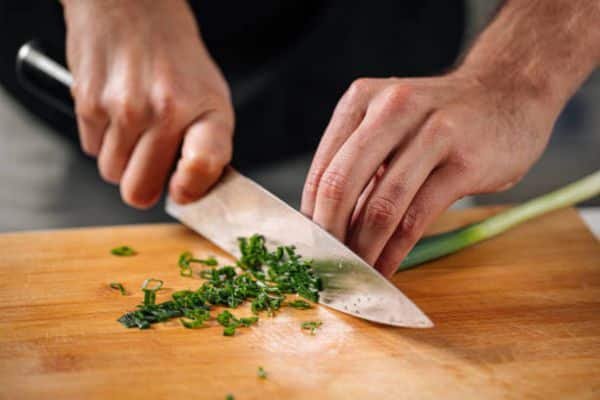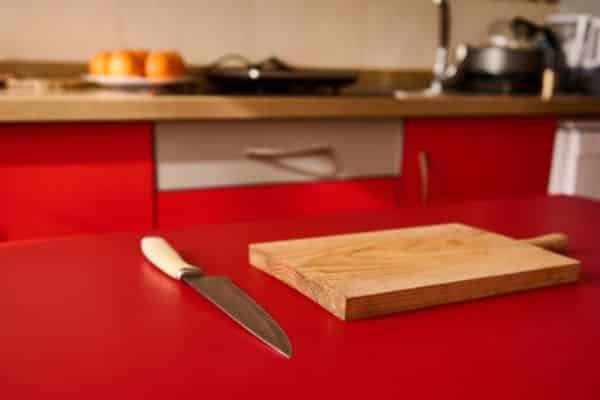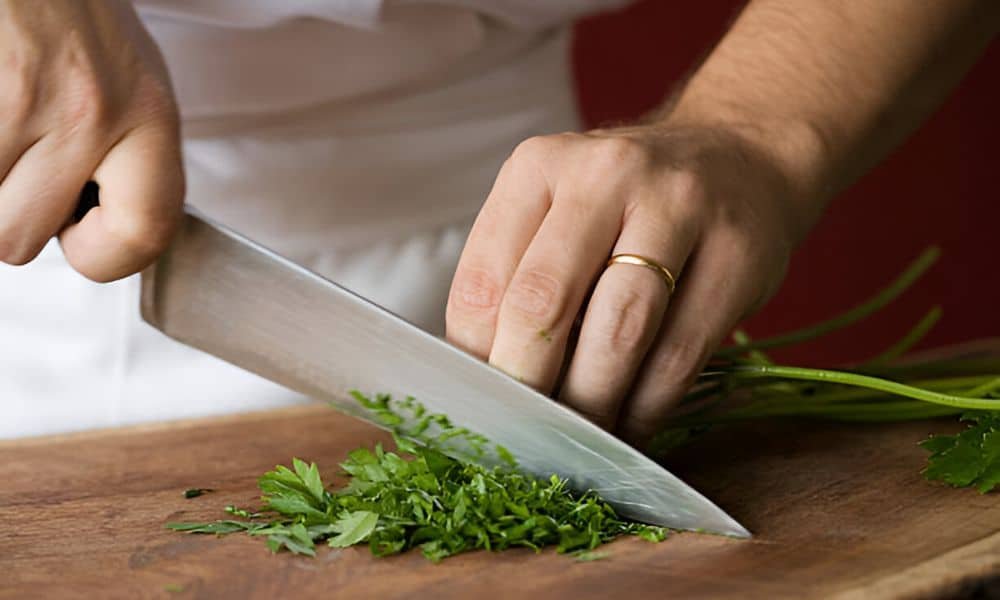I still remember the first time I used a properly sharpened knife. It was smooth. Easy. Almost silent. The blade slid through a tomato like it wasn’t even there. Before that, cooking felt hard. I struggled with prep. My hands ached from pushing dull blades. I thought it was normal. It wasn’t. One small change made a big difference. I learned what angle should kitchen knives be sharpened. That simple detail changed the way I cook.
A good edge does more than cut. It makes food prep faster. Helps you feel in control. It brings joy to the kitchen.In this guide, I’ll show you what angle to sharpen kitchen knives. I’ll share simple steps, trusted tools, and my best tips. By the end, you’ll know exactly how to keep your knives sharp and your cooking smooth.
Why Sharpening Angle Matters (And Why You Should Care)
A knife works best at the right angle. It glides, not grinds. A sharp blade needs less force. It makes your cuts clean and smooth.
The knife sharpening angle controls how the edge feels. A small angle makes the knife razor-sharp. A wide angle makes it strong but less sharp. Both have value.
Think of slicing a soft tomato. A dull knife slips and squashes. A sharp one glides like silk. That clean slice comes from the edge and the angle.
Most home cooks miss this part. They sharpen at random. I did too. Once I learned the right angle, prep became easier and more fun.
The Best Angles for Kitchen Knives (With Clear Examples)

Every knife has its best angle. This angle determines how smoothly it cuts and how long the blade stays sharp. When you choose the right knife, especially from a high-quality yet affordable option like the best kitchen knife set under 100, kitchen work becomes much more efficient and enjoyable.
Western Knives — 20 Degrees
These are strong and thick. They can handle bones and hard roots. The edge is tough and lasts longer.
- Sharpen at 20 degrees on each side
- Best for daily prep and thick foods
- Good choice for home cooks
Japanese Knives — 15 Degrees
These knives are sharp and light. They glide through soft items. You feel the clean slice with less effort.
- Sharpen at 15 degrees per side
- Great for fruit, herbs, and fish
- Needs gentle care
Single Bevel Knives — 10–15 Degrees (One Side)
These are sharp on one side only. Chefs use them for perfect cuts. They need skill and care.
- Sharpen at 10–15 degrees on one side
- Used in sushi and fine prep
- Not for casual use
Knife Angle Chart
| Knife Type | Sharpening Angle | Use Case | Skill Level |
| Western | 20° per side | General chopping | Beginner |
| Japanese | 15° per side | Soft or fine slicing | Moderate |
| Single Bevel | 10–15° (one side) | Sushi, expert cuts | Advanced |
How to Sharpen at the Right Angle (Step-by-Step)

Sharpening feels easy once you know the angle. You don’t need to press hard. You just need the right tilt and smooth hands. The edge will do the rest.
So, what angle should kitchen knives be sharpened? For most blades, it’s between 15 and 20 degrees. Match the type and stick to it.
Try This: The Coin Trick
Stack coins to guide your hand.
- Use 1 coin for 15 degrees
Use 2 coins for 20 degrees - Place the coin near the blade’s spine
- Keep that space steady from heel to tip
This helps train your hand. Over time, you won’t need the coins. You’ll feel the angle.
Easy Steps with a Whetstone
- Soak the stone
Let it sit in water for 10 minutes. Bubbles will stop once it’s ready. - Hold the angle
Use your coin guide. Angle the knife and rest your fingers on the blade.
Draw the blade
Move it from heel to tip. Use light, even strokes. Repeat 10 times. - Flip and repeat
Do the same thing on the other side. Keep the angle steady. - Rinse and test
Wipe the knife. Try cutting paper. A sharp edge should glide through.
Safe and Simple Tips
- Sharpen on a stable surface
- Use water, not oil
- Keep the blade clean
- Take your time
Tools That Make It Easier (Especially If You’re New)
Good tools make sharpening simple. You don’t need to buy the most expensive gear. You just need one that fits your hand and helps you feel in control. Some tools sharpen. Others help maintain. Let’s explore three great options for beginners.
Honing Rods
A honing rod is a long metal stick that keeps your knife edge straight. It doesn’t remove metal. It realigns the edge after use. This makes your knife feel sharp for longer. It’s best for daily careand quick touch-ups. Use it once a week to keep your blade in shape. It’s fast, easy, and safe to use in any kitchen.
Whetstones
A whetstone is a flat stone used with water to sharpen knives. It gives full control and brings a dull blade back to life. Many cooks use it for deep sharpening. You do need a bit of practice to get it right. Before using, soak the stone for 10 to 15 minutes. It’s great for learning the skill and getting a razor-sharp edge.
Guided Sharpeners
A guided sharpener holds your knife at a fixed angle, like 15 or 20 degrees. This means you don’t need to guess or tilt your wrist. It gives steady, even results every time. This tool is ideal for beginners. It’s simple and safe. Though it’s not flexible for advanced users, it’s a great way to start.
Pro Tips to Keep Your Knife Sharp Longer

A sharp knife feels smooth and safe. With a little care, you can keep that edge strong. These tips are easy to follow and make a big difference.
Start with regular honing. This keeps the edge straight. It does not sharpen but helps the blade last longer. Hone once a week for best results.
Sharpen only when needed. This removes metal and brings back a dull blade. If you hone often, you won’t need to sharpen much. Less sharpening means your knife lasts longer.
Store your knife the right way. A drawer can dull the edge. Try a wooden block, a blade cover, or a magnetic strip. These protect the blade from damage.
Clean your knife by hand. The dishwasher can ruin the edge. Use warm water and a soft cloth. Dry it right after. This helps the knife stay sharp and clean.
Check your edge often. Try slicing paper. A sharp knife will glide through. If it tears or pulls, the blade needs care.
Common Mistakes Beginners Make (And How to Avoid Them)

Learning to sharpen takes time. Mistakes are normal. But a few small errors can make your knife dull or even unsafe. Let’s fix them before they slow you down.
The most common mistake is changing the angle too much. A steady tilt keeps the edge sharp. If the angle shifts, the blade loses shape. Pick one angle and stick to it.
Some people use the wrong tool. A honing rod won’t sharpen. A coarse sharpener can remove too much metal. Always match the tool to the job.
Pressure matters. Pressing too hard can grind the edge away. Pressing too light won’t do much. Let the weight of the blade guide your hand. Smooth strokes work best.
Angle tricks can help. Use coins or a guide to keep a steady tilt. One coin gives you 15 degrees. Two coins give you 20. These tips make sharpening easier and more fun.
Final Thoughts
Sharpening may feel new, but it’s worth learning. A sharp knife saves time. It feels smooth. It makes cooking easier and more fun.You don’t need to be perfect. Just start. Each time you try, it gets easier. Your hands will learn what works.It takes only a few minutes. The reward is huge. A clean slice. A safer blade. A better kitchen flow.Try sharpening just one knife today. Watch how it changes your prep. You might even enjoy

